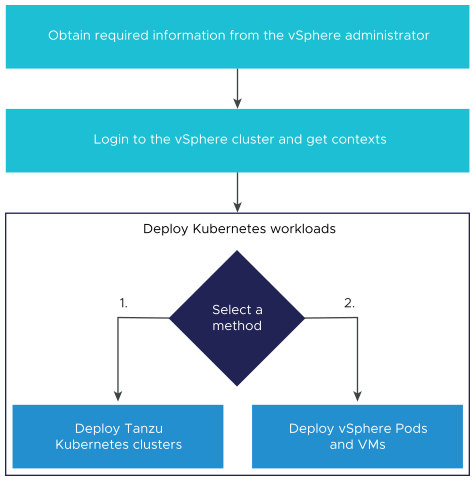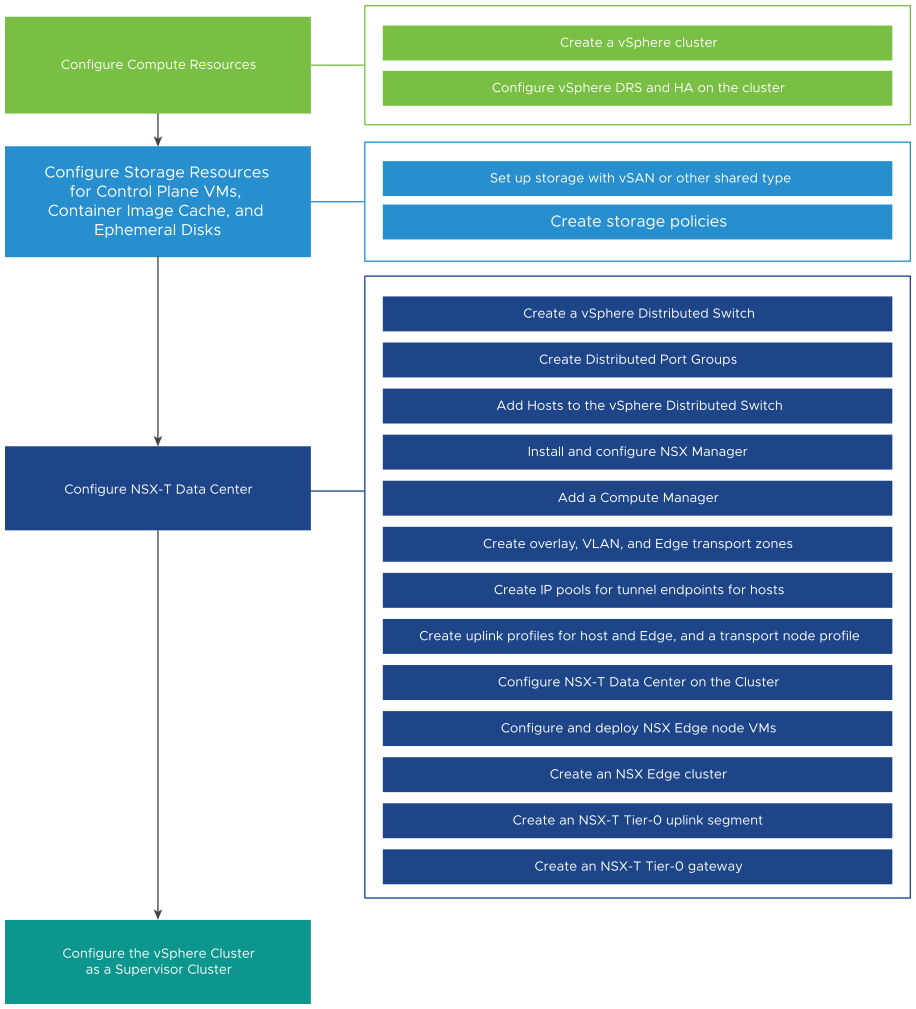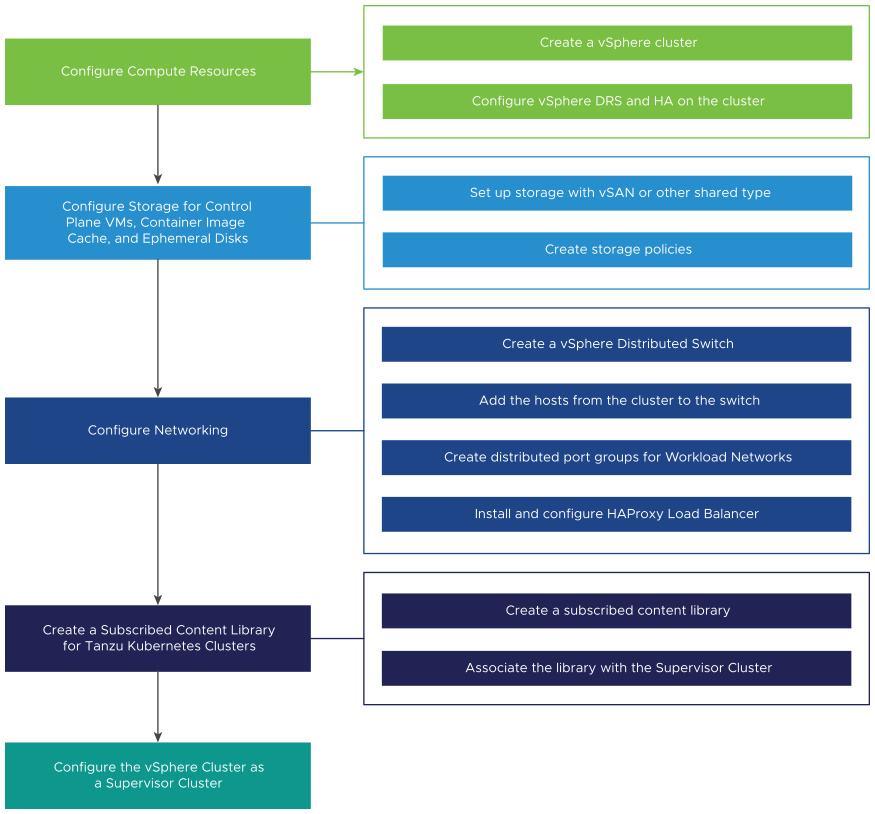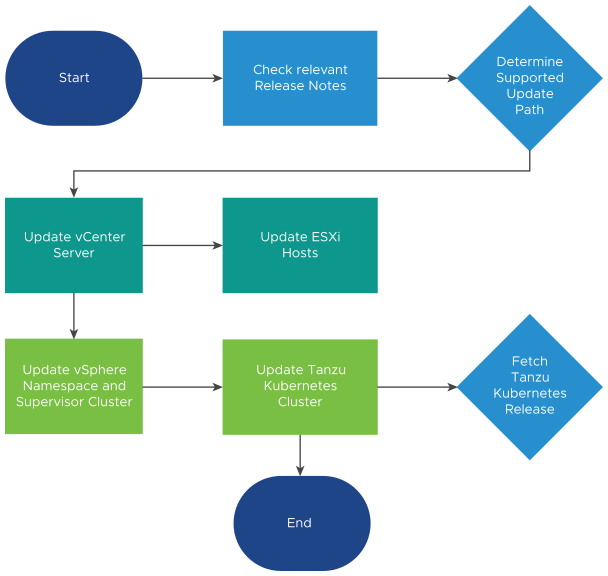The vSphere with Tanzu platform involves two roles, the vSphere administrator and the DevOps engineer. Both roles interact with the platform through different interfaces and can have users or user groups defined for them in vCenter Single Sign-On with associated permissions. The workflows for the vSphere administrator and DevOps engineer roles are distinct and determined by the specific area of expertise these roles require.
User Roles and Workflows
As a vSphere administrator, the primary interface through which you interact with the vSphere with Tanzu platform is the vSphere Client. At a high level, your responsibilities involve configuring a Supervisor Cluster and namespaces, where DevOps engineers can deploy Kubernetes workloads. You should have excellent knowledge about the vSphere and NSX-T technologies, and basic understanding about Kubernetes.

As a DevOps engineer, you might be a Kubernetes developer and an application owner, a Kubernetes administrator, or combine functions of both. As a DevOps engineer, you use kubectl commands to deploy vSphere Pods, VMs, and Tanzu Kubernetes clusters on existing namespaces on the Supervisor Cluster. Typically, as a DevOps engineer, you do not need to be an expert on vSphere and NSX-T, but have basic understanding about these technologies and the vSphere with Tanzu platform to interact with the vSphere administrators more efficiently.

Supervisor Cluster with NSX-T Data Center Workflow
As a vSphere administrator, you configure the vSphere with Tanzu platform with the necessary compute, storage, and networking components. You can use NSX-T Data Center as a the networking stack for Supervisor Cluster. For more information about the system requirements, see System Requirements for Setting Up vSphere with Tanzu with NSX.

Supervisor Cluster with vSphere Networking Stack Workflow

Supervisor Cluster with vSphere Networking and NSX Advanced Load Balancer Workflow
The diagram shows the workflow for configuring vSphere Networking and NSX Advanced Load Balancer for vSphere with Tanzu. For more information, see Install and Configure the NSX Advanced Load Balancer.

Namespace Creation and Configuration Workflow
As a vSphere administrator, you create and configure namespaces on the Supervisor Cluster. You must gather specific resource requirements from DevOps engineers about the applications and workloads they want to run and configure the namespaces accordingly. For more information see, Configuring and Managing vSphere Namespaces.

Self-Service Namespace Creation and Configuration Workflow


vSphere Pod and VM Provisioning Workflow
As a DevOps engineer, you can deploy vSphere Pods and VMs within the resources boundaries of a namespace that is running on a Supervisor Cluster. For more information, see Deploying Workloads to vSphere Pods and Deploying and Managing Virtual Machines in vSphere with Tanzu.

Tanzu Kubernetes Cluster Provisioning Workflow
As a DevOps engineer, you create and configure Tanzu Kubernetes clusters on a namespace created and configured by your vSphere administrator. For more information, see Workflow for Provisioning Tanzu Kubernetes Clusters Using the TKGS v1alpha2 API.

vSphere with Tanzu Update Workflow
